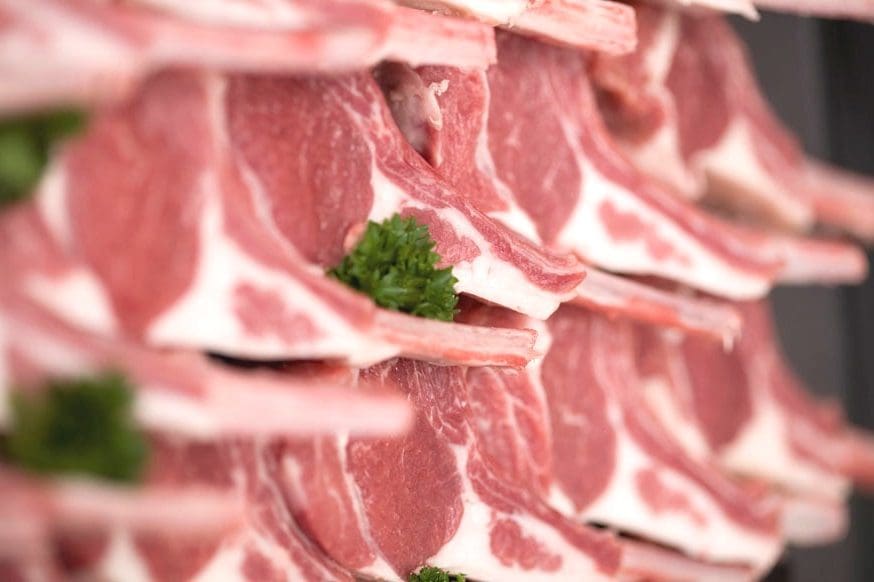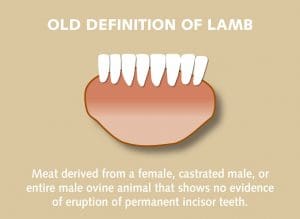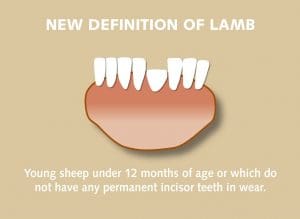
CONSUMERS will not be negatively affected by a proposed redefinition of lamb in Australia, the nation’s peak sheep producer and processor bodies said this week.
Sheep Producers Australia and the Australian Meat Industry Council have rejected suggestions in a recent A Current Affair segment that there might be negative implications for consumers in the industry’s redefinition of lamb based on dentition. Click here to review the A Current Affair segment.
The Current Affair piece claimed that “as of the 1st of July farmers can sell sheep as lamb” and suggested consumers “could be getting hogget” just before some Seinfeld footage about mutton is aired. The footage also includes a short clip of Lambassador Sam Kekovich saying “it’s an absolute disgrace”, lifted from a promotion where he was protesting at vegtarians not eating lamb on Australia Day.
The TV report also suggested that the definition change could mean a “price overhaul” for lamb with prices potentially reduced by 10-15pc and it would only benefit consumers if policed properly.
The current definition of lamb is a female, castrate or entire male that has no permanent incisor teeth. The new definition will be an ovine animal that is under 12 months of age, or does not have any permanent incisor teeth in wear. It will apply to ovine animals that are slaughtered on or after 1 July 2019.


AMIC chief executive officer Patrick Hutchinson said consumers will not be offered mutton as lamb when the definition changes on 1 July this year.
“The vast majority of lambs will be bred and processed as they are now, this is about avoiding an immediate reclassification of a small amount of product that causes wastage in the lamb supply chain.
“Consumers will not be offered mutton as lamb,” he said.
“However, some ovine animals under the current classification of hogget will be eligible to be graded as lamb from July 1.”
Mr Hutchinson said eating quality has been at the centre of the decision to change the definition of lamb.
“Peer-reviewed research found that a minor change to the definition of lamb such as one or two permanent incisors having erupted, but not being in wear, produced no discernable difference in eating quality to lambs with only milk teeth. (Weise et al 2005, Pethick 2008, Hopkins et al 2007).
“The change may even improve the quality of lamb on the shelves, as producers have the confidence to put the optimal amount of condition on their lambs prior to sale,” he said.
Sheep Producers Australia chairman Chris Mirams supported AMIC Patrick Hutchinson in that the changes would mean no difference in the product supplied to consumers, it would benefit Australian producers and put Australia on a level playing field with global market competitor New Zealand.
“There are no ramifications for the consumer.”
He rejected the suggestion that producers would be able to sell sheep as lamb.
“Obviously the answer to that is ‘No’, lamb is lamb is lamb under the new definition.
“The lamb definition will now include lambs whose baby teeth have fallen out and a permanent tooth has erupted up to the point of wear.”
His understanding is that the lamb supply will only be increased by about 1pc by the definition change, involving those lambs which had just “cracked” (erupted) their permanent teeth.
“In the old days, there would be a price cliff and you wouldn’t know when they were going to crack their teeth.
“Under the new system, if a baby lamb tooth falls out a farmer has on average about 27 days to get it into to be slaughtered as lamb,” he said.
He said SPA relied on the data that showed there was no change in eating quality in the period until an erupted tooth was in wear.
No changes expected in policing methods
Mr Mirams and Mr Hutchinson did not expect there would be any change in the process by which processors would police the definition change.
“There will be no change in the process, but instead of looking for erupted teeth, they will be looking for erupted teeth and confirming they haven’t grown higher than the lamb teeth,” he said.
Mr Hutchinson said although the definition of lamb is changing, the identification requirements including mouthing, monitoring and auditing requirements are not.
“Australia has a robust system when it comes to the classification of ovine Animals is processing plants.”
Sheep Central has been told some processors already use camera technology to assess dentition on lambs.
No change in lamb prices anticipated
Mr Hutchinson said AMIC did not anticipate the small change to the definition of lamb will change the supply or the pricing structure of lamb.
Mr Mirams said increase in lamb supply would not affect the market or prices “at all”. He said there had been wide industry consultation on the proposed definition change with 83pc of 500 respondents to a survey agreeing with the move.
Hogget definition will also change
Mr Hutchinson said the new lamb definition will apply to ovine animals that are slaughtered on or after 1 July 2019.
“The Export Control (Meat and Meat Products) Amendment (Trade Descriptions for Sheep) Order 2019 has been amended to allow a change in the definition of lamb in the Australian meat language to allow for the eruption of permanent incisors, as long as they remain not in wear.
“The change, to be implemented from July 1, is the result of years of work from AMIC and Sheep Producers Australia working together for the benefit of the entire supply chain,” he said.
“NSW and WA also have references to the definition of lamb in state regulations.
“Both states are working to ensure they recognise the definition of lamb as per the Export Control Orders by July 1 2019.”
Mr Hutchinson said the current definition of hogget will also change on July 1. Hogget is defined as a ‘Carcase derived from female or castrate male ovine that has 1 but no more than 2 permanent incisor teeth, and in a male, has no evidence of secondary sexual characteristics.
The new definition of hogget will be meat derived from a female or castrate male ovine animal that has one (1) but no more than two (2) permanent incisor teeth in wear, and in males, shows no evidence of secondary sexual characteristics.

Where have you been hiding over the last 20 years? All the export works our agency supplies have always inspected the mouths of lambs. And particularly at this time of the year, we have odd hoggets found in consignments of lambs, even though the lambs had been mouthed a couple of days prior to trucking.
Your comment that many farmers put 1-2 percent hoggets in their lamb consignments is an insult to all farmers.
The NVD and AHS gives you the name and PIC numbers of those lambs, so if you have controls in place it would be extremely easy to deduct the reduction in price from the vendor. It appears you need to look at your own system.
I’m not convinced that consumers will benefit, as from what I see only farmers will reap the rewards of selling hoggets as lamb. There is no way that lamb prices will fall because of the new classifications. We buy lamb through the saleyards for our meat export contracts and it should not be a surprise to anyone how many farmers slip 1-2 percent of hoggets in their group of 400 head of lambs, just to get the extra value of lamb. Only the processors lose out, as meat inspectors reject those animals not being correctly identified lambs. So please convince me after July that lamb/hogget prices have justified in price adjustment to help the consumer.